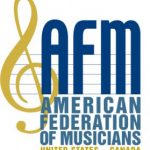WEDDING CEREMONY
Selecting the right musical ensemble for your wedding ceremony
Before you begin the process of selecting soloists and ensembles, consider all aspects of your ceremony – from the wedding site you’ve chosen to the number of guests in attendance. Will your wedding take place indoors or outside? Are you planning a large or a small affair? Does your ceremony site have restrictions on music selections that can or can’t be performed?
The answers to these questions, and more, will help you select the musical support that’s appropriate for the site and, equally important, the musical support that’s right for you.
LET'S GET STARTED
VENUE SIZE
PRIMARY ENSEMBLE
POPULAR WEDDING ENSEMBLES
Here are some of the more popular wedding ensembles:
- String Duo (two violins or violin and cello)
- Guitar Duo (two guitars or guitar and flute)
- String Trio (two violins and cello)
- Flute Trio (flute, violin and cello)
- String Quartet (two violins, viola and cello)
- Woodwind Quintet (flute, oboe, clarinet, horn and bassoon)
- Brass Quintet (two trumpets, horn, trombone or euphonium and tuba)
- Solos, duos or trios with saxophone, horn, clarinet or flute in combination with keyboard.
- Eclectic combinations of folk or ethnic music such as Latin or Celtic.
To assist in selecting the appropriate group, most musicians will have a demo tape or CD that demonstrates what the different ensembles are capable of playing. Most ensembles have a leader who works with clients to put together appropriate musical accompaniment, from a single instrument (such as an organ or violin) to a 10-piece orchestra. The more instruments, the fuller the sound – but remember, the size of the ensemble must be appropriate for the site.
Also, while you may like the sound of a certain instrument, including it might not be as easy as just adding it to your ensemble. For example, you might want to add an organ or piano or, possibly, a harp to your basic ensemble and, if your site isn’t too small, maybe a couple trumpets. Keep in mind though, you want to ensure a proper balance is maintained and, equally important, you want to ensure the ensemble is appropriate for the site. So, before you hire those trumpet players or harpist or organist, ask your ensemble’s leader what would work best. He or she will know.
ADDING A VOCALIST & HARP
If you decide to add vocalists, it’s a good idea to have the singing begin only after everyone is seated for your ceremony. When a vocalist steps up to sing, guests feel obliged to be quiet and pay attention, which creates awkwardness if you’re also trying to seat your guests at the same time. It’s also wise to make sure the vocalist is comfortable with your selections. Ask which songs the soloist knows well, and work together to build a song list that satisfies you both. If there’s a song you want included that he or she isn’t familiar with, have your ensemble, or a solo member of the ensemble, play an instrumental version of the selection.
If you decide to add a harp, make sure there’s enough room for it, and make sure you scope out a way to get it in and out of your site (it’s very difficult to drag a harp through a kitchen). And keep in mind, if you’ll be outside, a harp may not be the best choice – the sound tends to drift upwards.

